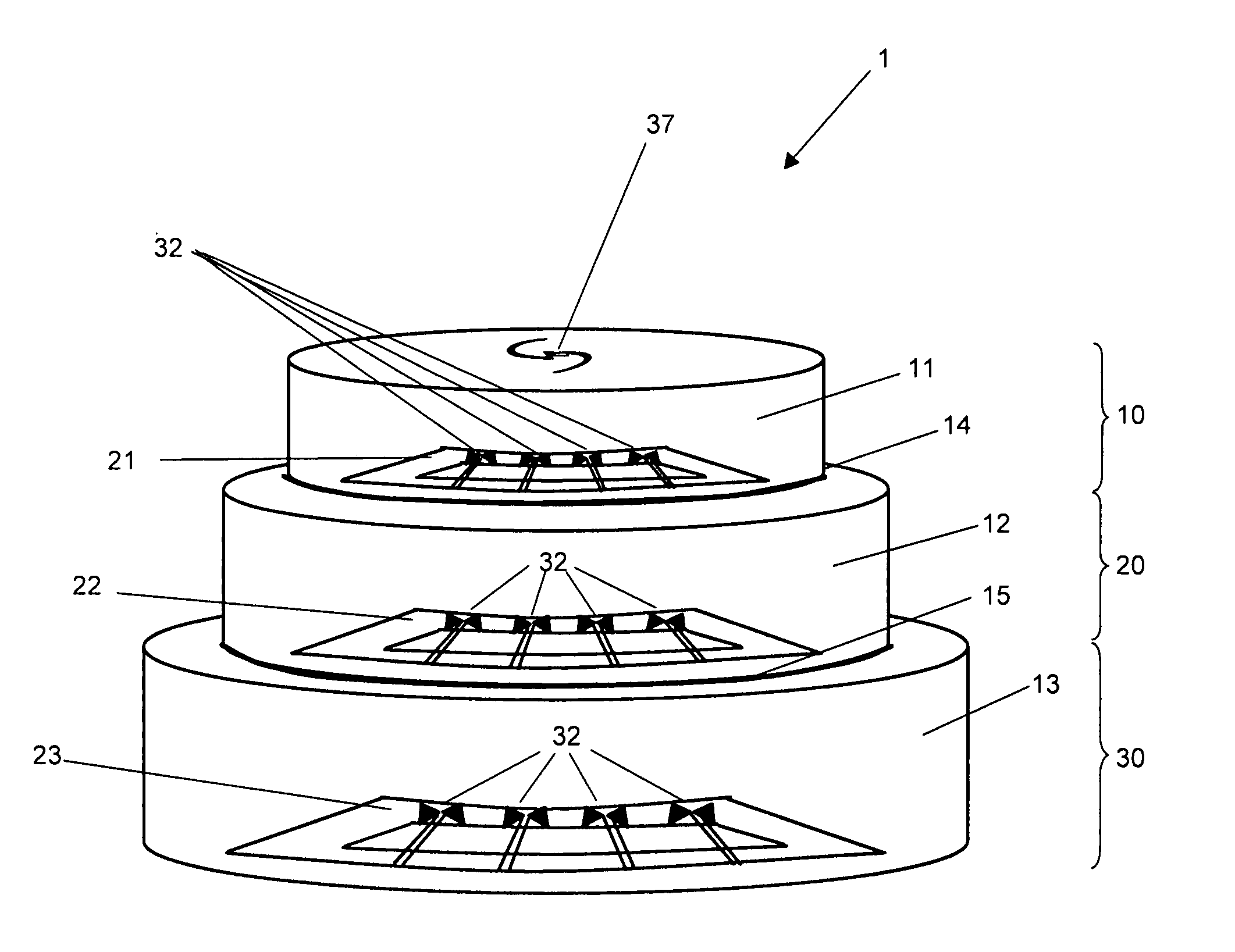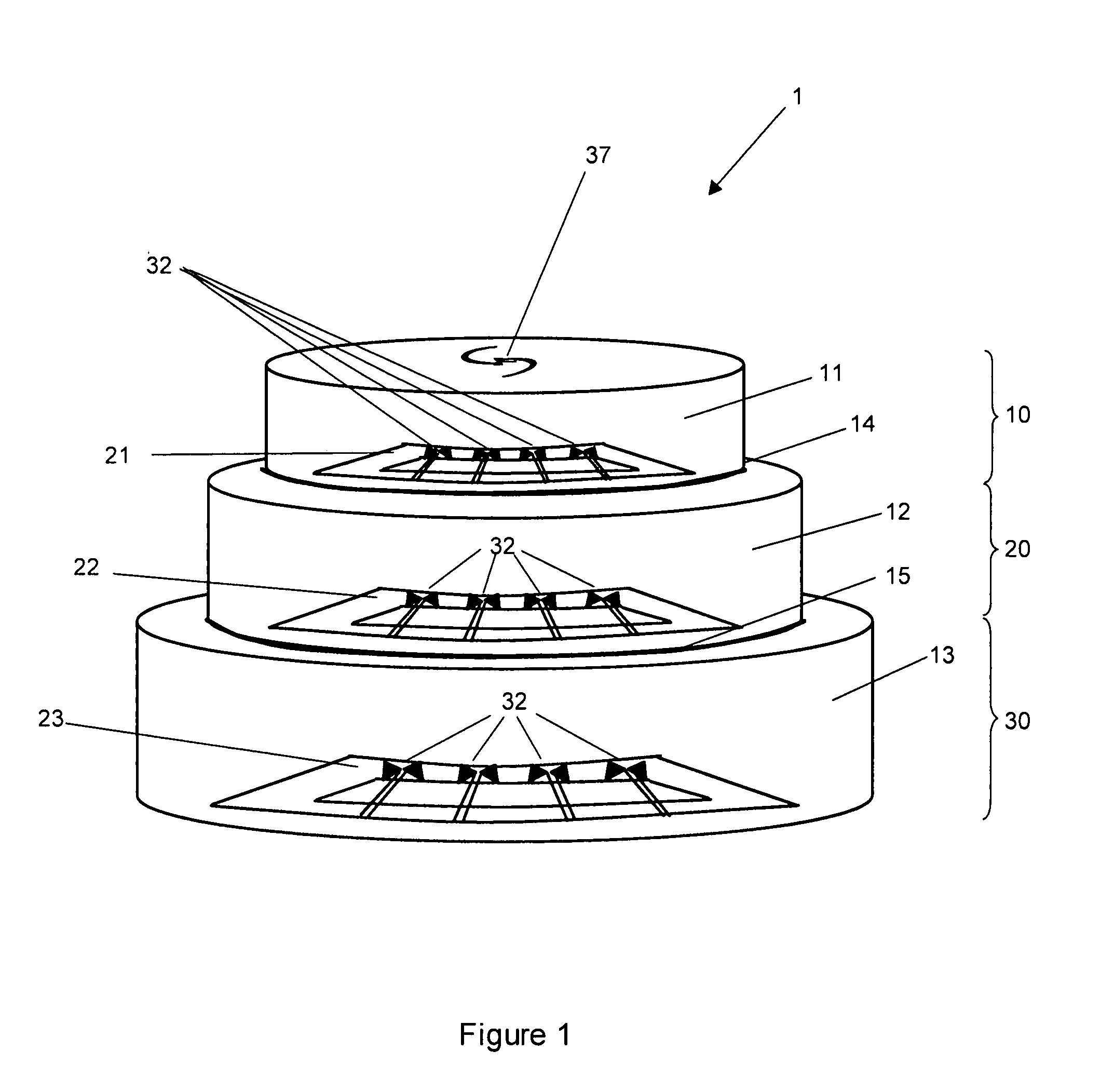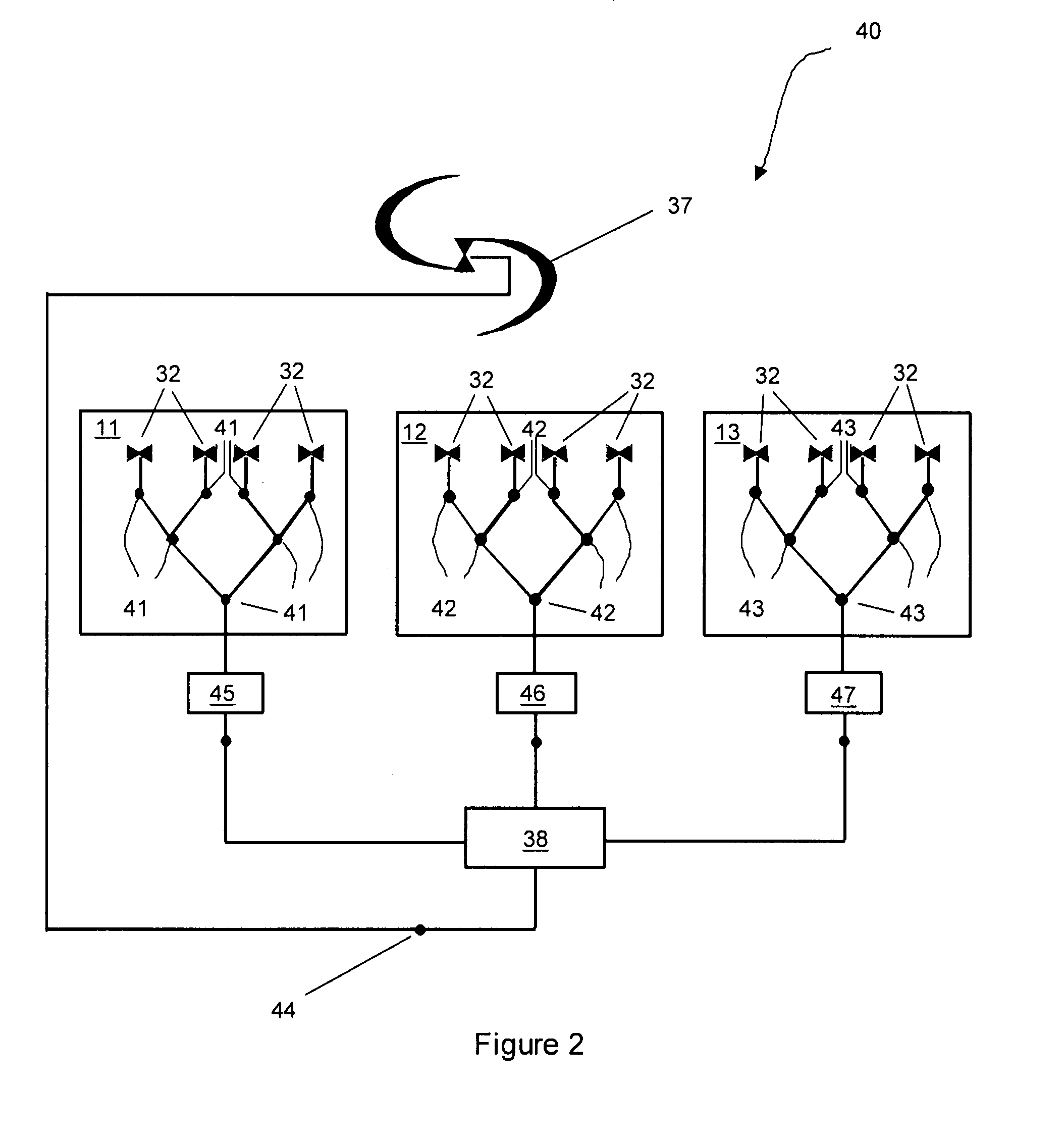Antenna operable across multiple frequencies while maintaining substantially uniform beam shape
a technology of antennas and beams, applied in the field of antennas, can solve the problems of changing the beam shape with frequency, complex technologies, and high cos
- Summary
- Abstract
- Description
- Claims
- Application Information
AI Technical Summary
Benefits of technology
Problems solved by technology
Method used
Image
Examples
Embodiment Construction
[0018]Further scope of applicability of the present invention will become apparent from the detailed description given hereinafter. However, it should be understood that the detailed description and specific examples, while indicating preferred embodiments of the invention, are given by way of illustration only, since various changes and modifications within the spirit and scope of the invention will become apparent to those skilled in the art from this detailed description.
[0019]In FIG. 1 an antenna 1, in accordance with a first embodiment of the invention, comprises three antenna units 10, 20, 30. Each unit comprises a cylindrical lens and an array of beam ports: unit 10 comprises lens 11 and array 21; unit 20 comprises lens 12 and array 22; and unit 30 comprises lens 13 and array 23. Cylindrical lenses 11, 12 and 13 are manufactured from polytetrafluorethylene and are arranged in a coaxial stack. It will be noted that the three cylindrical lenses are of different sizes, lens 11 h...
PUM
 Login to View More
Login to View More Abstract
Description
Claims
Application Information
 Login to View More
Login to View More - R&D
- Intellectual Property
- Life Sciences
- Materials
- Tech Scout
- Unparalleled Data Quality
- Higher Quality Content
- 60% Fewer Hallucinations
Browse by: Latest US Patents, China's latest patents, Technical Efficacy Thesaurus, Application Domain, Technology Topic, Popular Technical Reports.
© 2025 PatSnap. All rights reserved.Legal|Privacy policy|Modern Slavery Act Transparency Statement|Sitemap|About US| Contact US: help@patsnap.com



